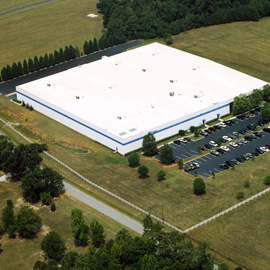Understanding filament tape and strapping tape
Strapping Tapes and Filament Tapes

Definiton: Strapping or filament tape is a pressure-sensitive material that allows for bundling applications, carton closing and sealing reinforcement package,unitizing loads, and securing products during shipment. Strapping tapes have reinforcements of tensilized polyproylne, polyester yarn or glass yarn filaments. They vary in tensile stregnth and adhesive types including: natural rubber, synthetic rubber, modified synthetic rubber, and clean removal.
Additional applications of filament tape beyond packaging include metal coil tabbing, residue-free temporary holding of components in an assembly (appliances), and splicing of belting.
Interesting Fact: Strapping or filament tape was invented in 1946 by Cyrus W. Bemmels, a scientist working for Johnson and Johnson.
Filament Tape and Strapping Tape Explained

Filament Tapes
Filament tapes are constructed of polypropylene film that is glass-reinforced and that has an aggressive natural rubber based adhesive system. These filament tapes have high tensile strength that can be enhanced with additional glass fibers. Consequently, there are low, medium, and high-grade products.
Filament tapes are used in packaging applications and for bundling applications

Polypropylene Strapping Tapes
Polypropylene strapping tapes are used to palletize cartons; and when properly applied, the tape shrinks around the cartons and holds them tightly.
Strapping and Filament Tape Applications
- Constructed with fiberglass filaments embedded into the adhesive
- Resistant to tears, scuffing, splitting and abrasion with high tensile strength.
- Stronger than other closures such as glues or twine.
- Economic alternative to industrial packaging materials and yet just as efficient in its performance.
- Clean removal, leaving behind no residue.
Strapping and Filament Tape Specifications
- Tensile strengths of strapping and filament tapes range from 100lbs to 600lbs per inch of width.
- Filament tape can sometimes be manufactured with cotton or synthetic filaments.
- Filament tape backing can be made from clear plastic or brown paper with the filaments usually running lengthwise down the tape, giving it strength.
Strapping tape can be found without the embedded filaments. This type of strapping tape is a heavy-duty polypropylene tape with the same intended use as a filament tape. Strapping tapes, sans the filaments, can be stretched without breaking, yet returns to its original shape and size to hold loads securely.
Specific Strapping and Filament Tape Standards
- ASTM D5330 / D5330m (filament reinforced tape)
Industries using strapping tapes
- Food and beverage
- Electronics, toys, sporting goods
- Appliances, furniture
- Automotice parts
- Oil and gas, pipe and conduits
- Metal working, general manufacturing
Strapping Tapes and Filament Tapes - Backing and Adhesive Options
Strapping Tape and Filament Tape Backing Options:
- Glass or Fiberglass Backing -Tape and film products are reinforced with fiberglass, fiberglass composite material, or a glass layer.
- Filament Backing-Filament is generically referred to as strapping tape. Filament tape draws its strength from thousands of individual filaments woven into yarns that are embedded in adhesive on the tape's backing.
- Fluoropolymer Backing- Fluoropolymer coatings are used in applications that require superior chemical resistance, good dielectric properties, and water and stain repellent characteristics.
- Paper Backing -Paper tape or flatback tape products have a paper backing.
- PET (Polyethylene) / Polyester Backing- tapes thatuse a PET or polyester backing in the form of tape, film, or laminate.
- Plastic or Polymer Backing-Plastic products incorporate one or more plastic layers, or consist of plastic film or sheets.This film can be clear or colored, printed or plain, single-layered or multilayered, and combined with materials such as aluminum and paper.There are two general categories of plastics: thermoplastics and thermosets.
Strapping Tape and Filament Tapes - Adhesive Options:
- None / Non-adhesive -Non-adhesive tapes, films or laminates do not have an applied adhesive, but may be self-adhering. PTFE thread-sealing tape is a type of non-adhesive tape.
- Acrylic -Acrylic adhesives provide excellent environmental resistance and faster setting times than other resin systems.
- Pressure Sensitive (PSA) -Pressure sensitive adhesives (PSAs) or contact adhesives are aggressively and permanently tacky at room temperature in dry (solvent free) form. PSAs do not require water, solvent, or heat activation in order to exert a strong adhesive force on materials such as paper, plastic, glass, wood, cement, and metal.
- Rubber -Rubber-based adhesives provide highly flexible bonds and are usually based on butadiene-styrene, butyl, polyisobutylene, or nitrile compounds.




